
Try Amazon Audible Premium Plus and Get Up to Two Free Audiobooks
FLYING THE PROTOTYPES

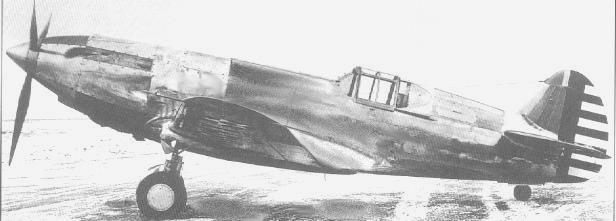 |
The YP-37 built by Curtiss was the first Army Air Corps fighter plane to use the Allison V-l710-11 engine. The airframe from the Curtiss P-36, an airplane already in production, was used to build the XP-37.
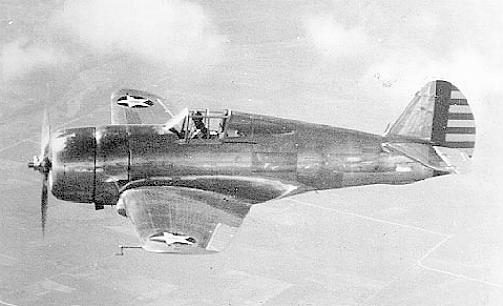 |
My first flight in the YP-37A was damn exciting. Since there were no pilots at Langley who had flown the YP-37A, I had to rely on the aircraft's operating flight manual. I studied it for several hours, then sat in the cockpit for more than an hour to familiarize 'myself with the controls and instruments. I felt as ready to go as I would ever be, I started the engine and taxied out to the northwest runway, Langley's longest, for my first flight.
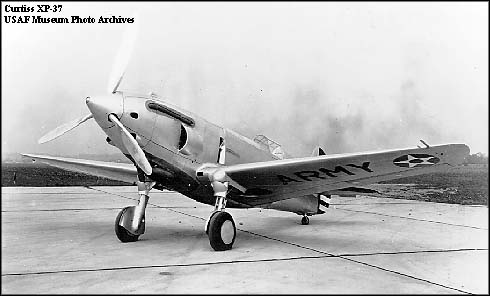 |
It was too late to land, since there was no runway left. There was little I could do except throttle back and try to cool the engine. Normally, reducing power would help. I had hoped I could circle the field and land back on the runway, with the reduced power.
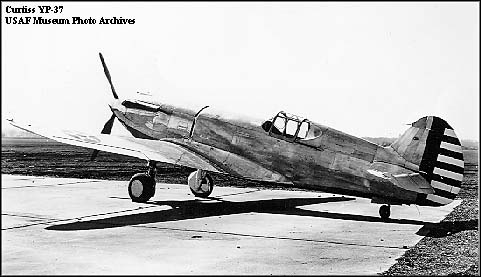 |
A quick glance at the speed indicator just at lift-off showed sixty mph. I knew It was in error, but my attention had been distracted by a more pressing problem. Normally, an inoperative airspeed indicator didn't present any difficulty, if I could have climbed upstairs and got to know the airplane before making a landing. At that moment, I had a grand total of two minutes in the YP-37A, hardly time enough to become comfortable with the airplane. On the downwind leg, the speed showed only eighty, though I knew it had to be closer to one hundred fifty, since this airplane stalled at eighty five miles per hour.
With my head stuck out the side of the cockpit, I still couldn’t see very well and didn’t know how fast I was going. The landing was going to he a tough one. I had to call on my overworked Guardian Angel once again.
I contacted the control tower, "May Day, I have an emergency and must land immediately."
"Cleared to land. The crash crew is on the way."
I was able to get out a brief, "thanks," and then concentrated my attention on flying the airplane. I circled back for landing and stayed within gliding distance of the field in case the engine quit. I could at least turn toward the field and belly land on the grass. Without the benefit of knowing the speed, I played it safe and came in a little hot. Fortunately, I had plenty of runway, and my landing was okay, but having my head stuck out of the cockpit made it very difficult. I slowed down and turned off the runway. When clear, I stopped in the grass and cut the engine. I could hear it crackling from the heat, so I jumped out in case it caught fire. If it did, I would have a head start and be long gone when it happened. While I waited nearby for the crash vehicles to arrive, I had time to thank my special Angel. I knew I would be lost without him. When the ambulance pulled up, I jumped in and was taken to base operations.
I found out later the airplane had been undergoing flight tests at NACA (National Advisory Committee on Aeronautics), and at the completion of the tests it was turned over to Base Engineering. The tests they were conducting were a series of flights that required the installation of specially calibrated test instruments. The airspeed indicator, of course, was among them. When they removed their instrumentation, NACA forgot to cap off the "T" they used that was part of the airplane's original pitot system which showed the plane's airspeed. This was the reason for the very low airspeed indication.
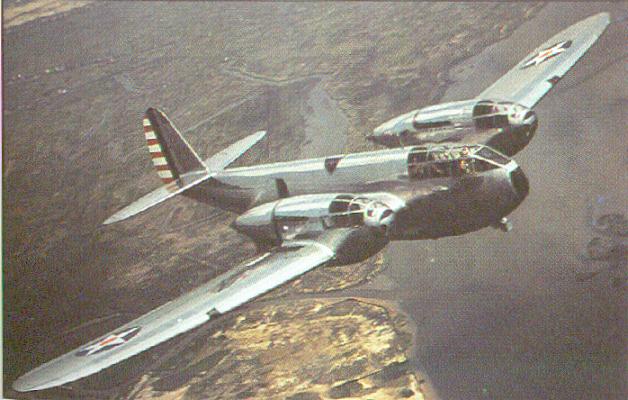 |
Another
airplane I flew was the YFM-1 Airacuda, made by Bell Aircraft
Corporation in Buffalo, New York. It was a pusher built around two
exhaust-driven turbo-charged Allison engines of 1040 horsepower each. It
was new in type and concept. The design's hypothesis was that it would
he used as a bomber-destroyer. It had thirty-seven millimeter cannons,
one in the nose of each nacelle, but little in the way of defensive
weapons. Several other innovations were being explored on the Airacuda
that were not used on any previous military airplanes. Because some of
the innovations were impractical, they haven’t been used since.
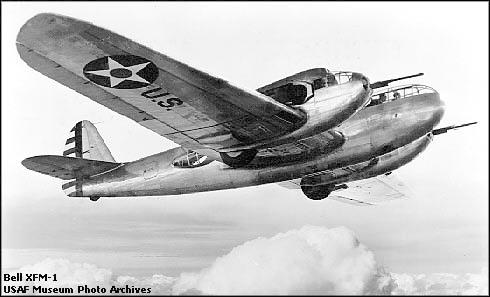 |
Flying the Bell Airacuda was a new experience for me, since it was the
first pusher aircraft I'd ever flown. Its handling characteristics were
foreign to anything I had ever had my hands on. Under power it was
unstable in pitch, but stable with power off. While flying straight and
level, if a correction in pitch was required, a forward push on the
control resulted in the airplane wanting to pitch over even more. Pitch
control became a matter of continually jockeying the controls, however
slightly, even when the aircraft was in proper trim. The same applied if
pulling back on the control. It would tend to continue pitching up,
requiring an immediate corrective response. The same happened in a turn
with power off, the Bell became stable in pitch. This was fortunate
because during approach and landing, it was very stable, and a nice
flying airplane.
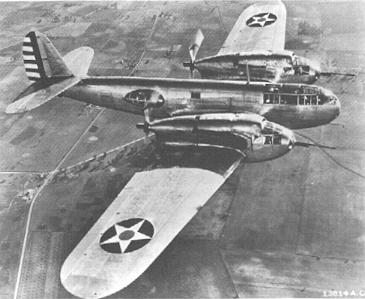 |
It was built around several new ideas never tried before, and was unlike
any other fighters up to that time. First, it wasn't designed to be a
fighter plane, although many had the mistaken idea that it was. It could
be better described as a bomber destroyer. The tactics suggested by its
designer were based upon the machine being used as a flying
anti-aircraft platform. It was a defensive weapon to be used only
against incoming bombers that were beyond The range of escorting
fighters. Although it had some defensive weapons, I think they were more
psychological in nature, for the benefit of the YFM-1 crew, than
practical.
The tactics envisioned were that the Airacuda would fly in trail, just
out of range of the enemy bomber formation's guns. Up to that time
bombers had .30 and .50 caliber weapons. It is important for the reader
to keep in mind that the Bell would be used only against enemy bomber
formations that were out of range of protective fighter escort. The
YFM-1 had little or no effective firepower for its defense, and as a
consequence, would be a sitting duck against agile fighters. The front
of each engine nacelle housed a 37 mm, gyro-stabilized cannon. With the
longer range of the 37 mm guns, they could pluck the enemy bombers off
one by one, In other words, it was a mobile anti-aircraft gun platform.
 |
The primary function of the men in the nacelles was loading the guns,
although they could be fired by the gun crew in an emergency. Initially,
the pilot of the plane aimed the airplane in the general direction of
the formation. Further correction in aim would then be made by the gun
control officer, and fired by him. His station was directly behind the
pilot, using an inverted periscope that came out through the belly of
the ship to aim the guns. The fire control officer would clutch the guns
into the gyros, which stabilized them. From that moment on they would
stay on target. The person operating the guns could then make any
further correction and fire away until the bomber was brought down. His
position had swing-out flight controls and in an emergency he could fly
the airplane. If it was necessary to abandon the aircraft, the pilot
would have to feather both engines to prevent the propellers from
chewing the men to pieces, especially those in the nacelles The flight
manual said they would feather in six seconds; that's a long time in my
book.
In addition to being a pusher airplane, the YFM-1 also had other unusual
features. It had only one engine-driven accessory, an emergency
fifty-ampere generator on the left engine. The Bell Airacuda was an
electrical nightmare. All normally driven engine accessories such as
fuel pumps, hydraulic pumps, vacuum pump, and the gyros stabilizing the
guns were electrically driven. Because of all the electrical energy
required, the ship had to have a full-time auxiliary power unit. The
auxiliary power unit was driven by a powerful four cylinder gasoline
engine which ran all the equipment. Since the aircraft was required to
operate at high altitudes, the APU also had to be turbo-supercharged. To
do this, a dual bleed came from the same exhaust turbochargers that
super-charged the Allison engines. The power unit was the weak link in
the system.
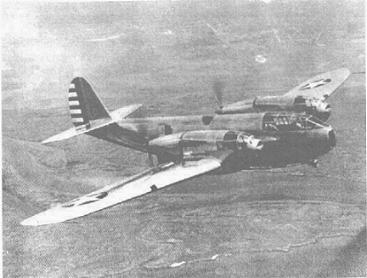 |
Changing fuel
tanks was simple. There was no fuel selector as we normally think of
one. Each fuel tank had its own fuel pump. Tanks were changed by
flipping the switch on for the electric fuel pump of the desired tank.
The gear and flap selector was similar in appearance to the C-47's fuel
selector. Gear and flaps were activated by rotating this control to the
appropriate position. It only had three positions, takeoff, fly and
land, and could be turned only in a clockwise direction. In the takeoff
position, the flaps were retracted. In the fly position, the gear was
retracted, and in the land position, both gear and flaps came down. The
flaps immediately followed the gear. Unfortunately the two were not
isolated from each other, and that posed a minor problem.
To get gear only, such as on downwind, the pilot would watch the gear as
it extended. When almost all the way down, he tripped the circuit
breaker. Then on final, when the flaps were required, the breaker was
turned back on. At the completion of the landing roll, the pilot would
select fly position, retracting the flaps.
The engines had no cooling fans, so in summer the airplanes had to be
towed to the takeoff position before starting. As soon as there was an
indication of an oil temperature rise, the pilot immediately started the
takeoff run. When landing, if the oil temperature was on the high side,
the pilot would have to shut the engines down and have the ship towed
to the parking area. If the airplane had only a short distance to taxi,
it could continue to its parking place under its own power.
One recurring problem experienced by pilots flying the Airacudas was
that the auxiliary power unit would all too frequently stall or quit.
The reverse current relay would stick and motorized the generator. Since
this would drain most of the current from the battery, all electrical
systems became inoperative: NO fuel pressure, NO vacuum, NO hydraulic
pressure, NO gear, NO flaps and NO ENGINES. The first time I lost both
engines, I was in the landing pattern on base leg just about to turn
final when the APU quit, then a second later so did both Allison
engines.
Fortunately, it occurred right after the gear locked down, and I was
able to make the runway without power. Although the airplane had a
wobble pump, the handle was only four inches long. It was impossible to
supply two Allison engines with the wobble pump, since they consumed
over three hundred gallons of fuel per hour at full power. Its only
purpose was to start the engines.
The second time the problem occurred, I was flying on instruments, but
again I was fortunate. They both quit not too long after I had started
into the overcast. I knew there was a couple thousand foot ceiling under
the cloud base, so I dove out of the cloud before the gyros tumbled.
All the while, the crew chief was trying to restart the APU, which
started with room to spare. With the APU going, the fuel pumps came on
and both Allison engines began producing power. The remainder of the
trip to Langley was uneventful and I made a safe landing there.
